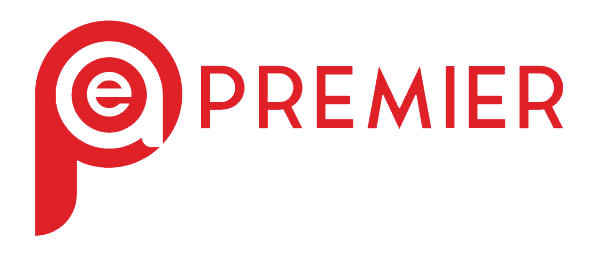Keep Your Shop Running Smoothly: The Ultimate Guide to Auto Equipment Repair
Whether you run a busy dealership, a neighborhood repair shop, or a home garage, your success depends on reliable, well-maintained equipment. From hydraulic lifts to tire changers, regular repair and preventive maintenance not only reduce downtime but also protect your bottom line and keep technicians safe. In this blog, we’ll explore:
-
Why Auto Equipment Repair Matters
-
Common Shop Equipment & Typical Repairs
-
Signs Your Equipment Needs Attention
-
Preventive Maintenance Best Practices
-
Choosing an Auto Equipment Repair Partner
-
DIY vs. Professional Service
-
Next Steps: Keeping Your Shop in Top Shape
1. Why Auto Equipment Repair Matters
-
Minimize Downtime: Every hour a lift or compressor is out of service costs labor and delays customer vehicles. Prompt repairs get your techs—and revenue—back on track.
-
Extend Equipment Life: Big-ticket assets like wheel balancers or welders can last decades when maintained properly. Tackling small issues early prevents costly overhauls.
-
Ensure Safety & Compliance: Faulty brakes on scissor lifts, leaking hydraulic lines, or uncalibrated alignment racks pose risks to technicians and customers. Regular servicing helps you meet OSHA and local safety standards.
-
Protect Your Reputation: A shop known for consistent, speedy service retains loyal clients. Frequent equipment failures lead to missed appointments and frustrated customers.
2. Common Shop Equipment & Typical Repairs
| Equipment | Common Problems | Repair Highlights |
|---|---|---|
| Hydraulic Lifts | Fluid leaks, worn seals, uneven lifting | Replace seals, top off hydraulic fluid, test balance |
| Air Compressors | Pressure loss, excessive noise, motor faults | Replace filters, tighten fittings, inspect motor brushes |
| Tire Changers | Bead breaker issues, turntable stalls | Adjust linkages, replace drive belts, recalibrate controls |
| Wheel Balancers | Inaccurate readings, display errors | Recalibrate sensors, update software, clean spindle |
| Alignment Racks | Caster/camber drift, sensor misalignment | Realign sensors, tighten mounts, check hydraulic cylinders |
| Brake Lathes | Inconsistent cutting depth, chatter | Sharpen or replace cutting tools, adjust feed rates |
| Welders | Weak welds, intermittent arcs | Check ground connections, replace worn cables or tips |
3. Signs Your Equipment Needs Attention
-
Unusual Noises or Vibrations. Grinding, squealing, or rattling often signals worn bearings, loose bolts, or misaligned components.
-
Slow or Hesitant Operation. If your lift takes longer to raise or your compressor struggles to build pressure, internal seals or valves may be failing.
-
Leaks & Drips. Hydraulic fluid or oil stains beneath equipment are a clear warning—don’t wait for catastrophic seal failure.
-
Inconsistent Results. Misaligned wheels, uneven cuts, or erratic torque readings point to calibration errors or sensor faults.
-
Dashboard Error Codes. Modern equipment often self-diagnoses. Never ignore warning lights or error messages—they’re designed to prevent damage.
4. Preventive Maintenance Best Practices
-
Daily Checks: Inspect hoses, fittings, and fluid levels before starting work. Wipe down equipment to remove debris and spotting leaks early.
-
Weekly Inspections: Verify calibration of balancers and alignment racks. Test safety locks on lifts and pressure relief valves on compressors.
-
Monthly Services: Change hydraulic and lubricating oils, replace air filters, and clean electronic controls.
-
Annual Overhauls: Schedule a comprehensive tune-up with a certified technician—complete fluid flushes, seal replacements, and software updates.
5. Choosing an Auto Equipment Repair Partner
-
Certified Technicians: Look for factory-trained or OEM-certified service staff who understand your specific brand and model.
-
Quick Response Times: Emergency breakdowns happen. A local provider with 24/7 support reduces costly downtime.
-
Warranty & Parts Availability: Ensure they stock genuine replacement parts and honor warranty coverage, preventing delays from back-ordered components.
-
Transparent Pricing: Detailed estimates—covering labor, parts, and any required shop time—help you budget and avoid surprise invoices.
6. DIY vs. Professional Service
| Aspect | DIY Repairs | Professional Service |
|---|---|---|
| Skill Requirement | Moderate to high; risk of injury | Handled by trained technicians |
| Tooling | Must own specialty tools | No capital outlay beyond service fee |
| Time Investment | Can sideline your own team | Technician arrives ready to work |
| Warranty Impact | May void manufacturer warranties | Maintains full OEM coverage |
Tip: Handle daily and weekly maintenance in-house, but reserve complex diagnostics, major overhauls, and calibration tasks for professionals.
7. Next Steps: Keeping Your Shop in Top Shape
-
Audit Your Fleet: Create an equipment inventory with purchase dates, last service recorded, and upcoming maintenance due dates.
-
Implement a PM Schedule: Use a digital calendar or CMMS (Computerized Maintenance Management System) to automate reminders for all preventive tasks.
-
Train Your Team: Host brief monthly workshops to review safety checks, basic troubleshooting, and proper reporting of anomalies.
-
Partner with an Expert: Establish a relationship with a trusted repair provider to handle emergencies and annual overhauls—schedule a service contract today.
